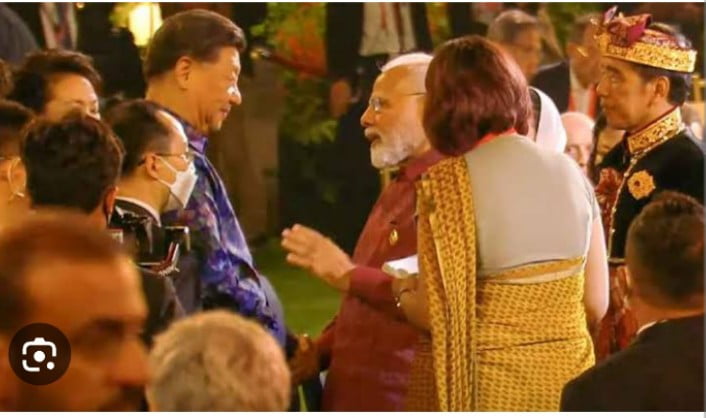In a aimed at msignificant and rare rendezvous, Chinese President Xi Jinping and Indian Prime Minister Narendra Modi engaged in a dialogue characterized by “candid and profound” discussionsitigating the simmering tensions along their disputed frontier. This remarkable face-to-face interaction transpired on the sidelines of the BRICS summit hosted in South Africa, thereby marking a notable juncture in the relations between these populous nations. The encounter assumed heightened importance as diplomatic channels between the two had been strained since a fatal altercation transpired along the Himalayan border in 2020, claiming the lives of 20 Indian soldiers and a minimum of four Chinese troops.
Following the somber events of 2020, both nations marshaled substantial military forces along the border, notwithstanding the series of 19 dialogues held between senior military officials from each side. The recent tête-à-tête between Xi Jinping and Narendra Modi offered a forum for a “candid and in-depth exchange of viewpoints,” as delineated by China’s foreign ministry. President Xi emphasized the intrinsic significance of advancing China-India relations to concur with the mutual interests of both nations and their citizenry. The ministry’s spokesperson underscored the necessity for both sides to maintain a holistic perspective on the bilateral relationship and adeptly navigate the matter of the border, thus jointly upholding the mantle of tranquility.
The Indian foreign secretary elucidated that during the summit, Prime Minister Modi cogently articulated the unresolved issues encapsulated within the Line of Actual Control (LAC), the delineation demarcating India’s Ladakh region from the corresponding Chinese expanse—precisely where the fatal clash materialized in 2020. Modi underscored the imperative of paying heed to the sanctity of the LAC as an indispensable condition for normalizing the intricate contours of the India-China relationship. The enduring conundrum of the shared 3,500-kilometer border and China’s assertions over India’s northeastern state of Arunachal Pradesh have historically infused discord into the bilateral equation. The historical specter of the 1962 border skirmish in India’s Arunachal Pradesh serves as an indelible backdrop to these perennial contentions.
Both nations have consistently accused each other of engaging in territorial assertions along their informal division line, known colloquially as the Line of Actual Control. The tragic events of 2020 cast an adverse pall on the bilateral rapport, engendering a palpable deterioration in relations. Undeterred, the administration under Modi’s stewardship embarked on a path of considerable investment aimed at enhancing civilian presence and augmenting infrastructure along the border. Concurrently, the establishment of novel paramilitary contingents underscored the nation’s resolve to safeguard its territorial interests.
Concurrently, India’s diplomatic overtures have extended toward forging deeper bonds with Western democracies, notably the Quad coalition encompassing the United States, Japan, and Australia. These nations identify India as a potential counterbalance to China’s burgeoning influence in the region. Despite a protracted series of 19 military dialogues, including the latest parley conducted earlier this month, the border disputes have proven recalcitrant to resolution.
The face-to-face meeting on the margins of the BRICS summit assumes paramount importance as it embodies the first direct interaction between Xi Jinping and Narendra Modi since a transitory engagement at the G20 Summit in Bali during the antecedent year. This juncture holds notable connotations as both leaders have been actively engaged in multilateral diplomatic arenas since the crucible of the 2020 confrontations, signifying a subtle yet pivotal stride toward potential reconciliation between these two titanic nation







